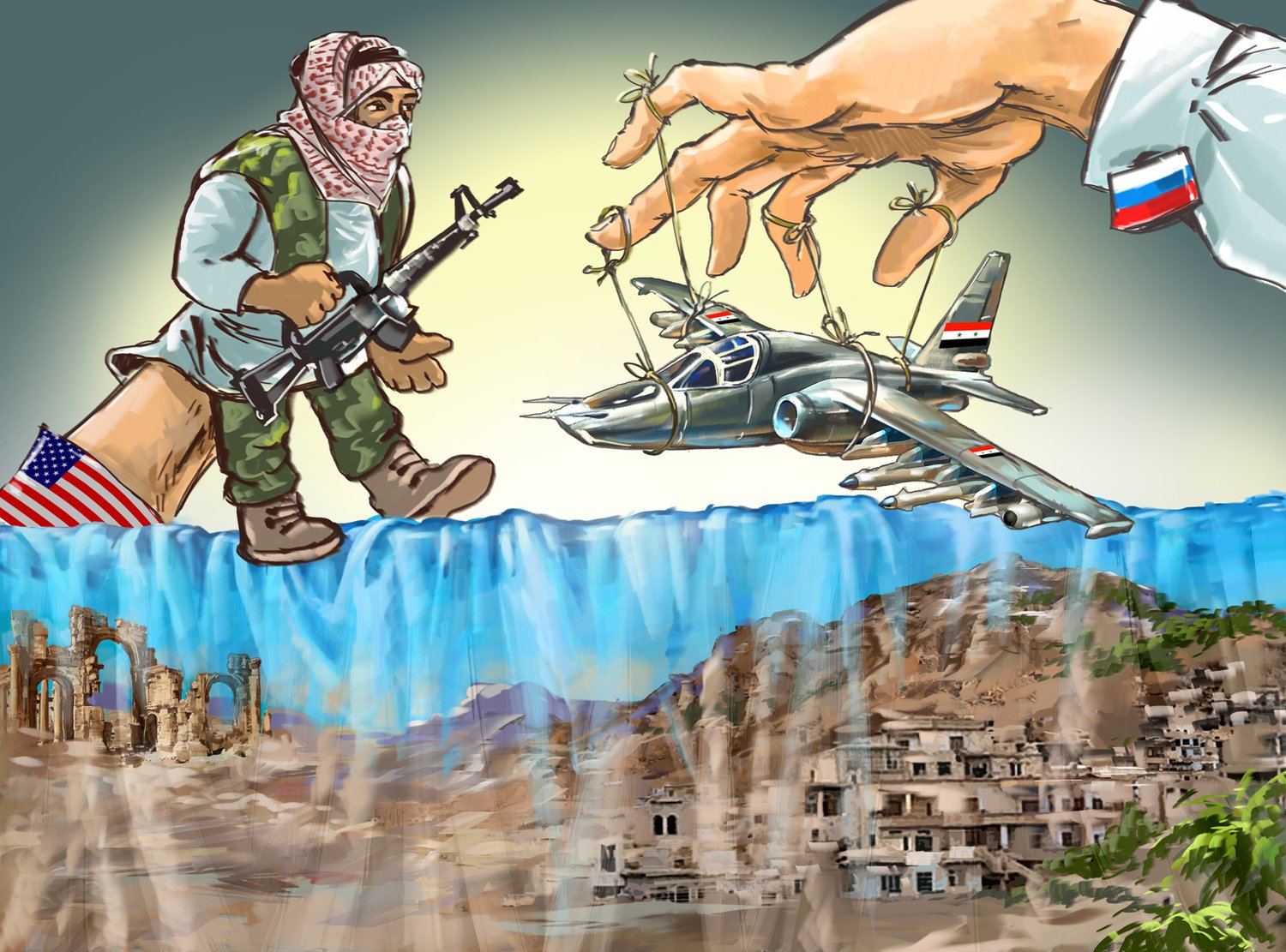The Cold War was largely a war of threats. But there was plenty of real violence as well. The aggression between the US and the USSSR spilled into places like Angola, Vietnam, and many more. During the Cold War, the term proxy war became largely popular.
What are proxy wars? What is their history? Do we still have examples today? Why nations embark into proxy wars? What are the downsides? Let’s discuss.
What is it?
The simple definition is the following, “a proxy war is an armed conflict between two states or non-state actors which act on the instigation or on behalf of other parties that are not directly involved in the hostilities”.
For one conflict to be considered a proxy war, there must be a direct, long-term relationship between external actors and the belligerents involved.
Usually, that type of relationship involves funding, military training, arms, and other forms of material assistance.
History
You might think proxy wars became popular during the Cold War. But they have been around forever. During classical antiquity and the Middle Ages, many non-state proxies were external parties that became part of a conflict.
For example, medieval states like the Byzantine Empire used proxy wars as a foreign policy to cultivate intrigue among hostile rivals. France and England valued them as a useful extension of their pre-existing conflict during the Hundred Years’ War. The Ottoman Empire used Barbary pirates as proxies to harass Western European powers in the Mediterranean Sea.
![]()
But during the Cold War, they became largely popular. Proxy warfare was motivated by fears that a conventional war between the United States and the Soviet Union would result in nuclear holocaust. Do you see something similar nowadays? The war in Ukraine, or the conflict, or military invasion, however you call it, is a de-facto proxy war between the US and Russia.
During the Cold War, the Soviet government found out that supporting parties antagonistic to Americans and other Western nations would be a cost-effective way to combat NATO’s influence. That encouraged the American practice of arming insurgent forces, for example, during the Soviet-Afghan war.
Examples of Proxy Wars
Many war experts agree the conflict between Russia and Ukraine is a proxy war. But let’s talk about some examples during the Cold War.
For example, the Congo Crisis. It was a period of social, political, and military upheaval in the newly formed Republic of the Congo, formerly Zaire. It lasted from 1960 to 1965. Congo has been a Belgian territory since the 1880s, and privately owned by King Leopold II.
![]()
Under Belgian rule, life for the people of Congo was miserable, as many died of disease, poor working conditions, and starvation. Resistance began during the 1950s and culminated with a declaration of independence in June of 1960.
What made Congo interesting is that both the Soviet Union and the US had uranium deposits, and the uranium located in the country was extremely valuable. Lumumba became the first Prime Minister and he initially asked for Western air to control rebel factions in the south. They denied him, so he turned to the Soviets, who provided weapons and military advisors.
But that decision worried officials in the US, who believed Congo would turn communist and provide Moscow with crucial uranium deposits, depriving the US from their prosperous overseas mines. So, in a backchannel coup, US military advisors helped Mobutu and Belgian operatives overthrow Lumumba, allowing Mobutu to rule with an iron fist until 1997.
Another prime example is the Angolan Civil War, lasting from 1975 to 2002. It was a prolonged conflict in the African nation that spilled into several nearby countries, including even Congo and Namibia.
Fought along ethnic and political lines, the war began following the withdrawal of Portuguese forces after the Angolan War of Independence. The Angolan Crisis was a power vacuum created by the newly formed nation. It gave way to fighting between military and political fractions.
The three fractions were backed by different power. The Movement for the Liberation of Angola was Marxist in nature and backed by the Soviet Union and Cuba, the National Front for the Liberation of Angola was backed by the United States, and the National Union for the Total Independence of Angola was aided by China to counter Soviet assistance.
Fearing the Soviet Union was attempting to establish a military base in Angola, the US and CIA backed up forces in Angola, switching between different fractions. The Angolan Civil War clearly represented a clash of ideology between capitalism and communism on the African continent.
![]()
Last, but not least, let’s finish off with the Vietnam War, a conflict in Vietnam and Cambodia. It was the second of the Indochina Wars and was officially fought between North Vietnam and South Vietnam. The North forces were supported by China and the Soviet Union, while the South forces were supported by the anti-communist allies, namely the United States.
The Vietnam War lasted for almost 20 years, with the direct US involvement ending in 1973. The conflict spilled into Laos and Cambodia, resulting in two other civil wars. In the end, all three countries became communist states by 1975.
Why are proxy wars attractive?
Proxy alliances usually involve the provision of money, arms, material, and training by states to non-state groups in exchange for the latter fighting on behalf of the former’s interest.
These alliances are quite appealing, because they are informal, covert, and operate in the shadows of the international system.
What this do is allow states to plausibly deny involvement in conflicts where the political and material costs of more direct intervention are high.
![]()
We talked about examples when the US funded rebels and militants, but the Soviet Union did the same. Both big countries and high-powered states love the appeal of a proxy war.
They are appealing because they do not involve direct conflict between two major states. Instead, someone else fights on their behalf.
Why are they dangerous?
Despite the obvious appeal of a proxy alliance, there are many dangers and challenges. For example, the ability to actually utilize proxies to their advantage.
Another big danger is the very covert and informal nature. This makes it difficult for governments to control and oversee their proxy allies.
To ensure plausible deniability, political leaders have to establish distance between the government and the proxy.
But the biggest risk is prolonged conflict. We talked about how the Vietnam War lasted for almost 20 years. Nobody can predict how long the Russia-Ukraine crisis will last. Being involved in a proxy war can be also taxing to the economy of the country.
And we have yet to mention the human costs. Two of the current and devastating proxy wars are happening in the Middle East, not in Europe. Yemen and Syria are prime examples of how state sponsored militant groups and coalitions interact in warfare.





















